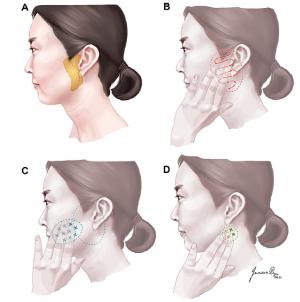Studies have shown that if the lump around the ear lasts for more than two weeks, it is likely to be a sign of parotid or salivary gland cancer.
Prof. Hanshin Jeong’s team from the Department of Otorhinolaryngology at Samsung Medical Center and Professor Junseon Ryu of the Head and Neck Oncology Clinic at the National Cancer Center devised a self-examination method for adenocarcinoma and published it in the international academic journal BMC Cancer.
The incidence of salivary gland cancer, including parotid adenocarcinoma, is very low, ranging from 1.4 to 2.0 per 100,000 population. However, recurrence and metastasis are common, so the prognosis is the best among head and neck cancers, and the 5-year survival rate is known to be 50-60%.
As a result of analyzing 406 parotid adenocarcinoma patients, the research team found that the diagnosis rate of high-malignant cancer was 20.2% when the size of parotid gland cancer was less than 2 cm. Malignant cancer diagnosis rate was proportional.

As such, early diagnosis is very important, such as checking for abnormal signs by touching the area around the ear, which is the main attack site.
According to the self-diagnosis method devised by the research team, carefully touch the area around the ear (Figure A) where the parotid gland is located (Figure A) to check for lumps (Figure B), and then examine it while moving from the jaw bone to the tail of the mouth and to the side of the nose (Figure C). ).
The space between the jaw bone and the bone behind the ear is also checked for lumps as part of the parotid gland is present (Fig. D). The research team recommended, “If the lump is touched for more than 2 weeks as a result of self-examination, you must go through a medical examination and examination by a specialist.”
Professor Jeong emphasized, “As it is known to develop after the age of 50, it is important to frequently touch the salivary glands after middle age and consult a doctor as soon as possible to reveal the presence of the disease.”
Copyright © Medical Tribune Unauthorized reproduction and redistribution prohibited
